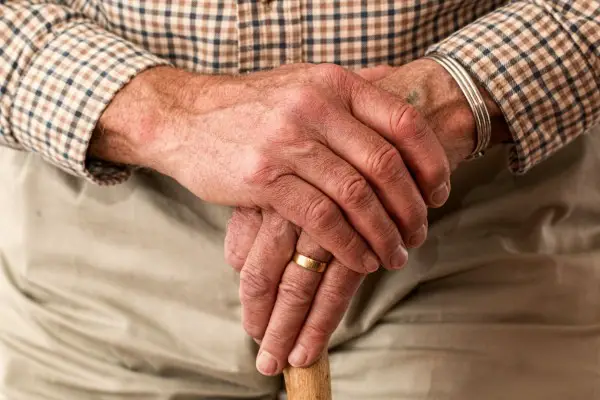What Is Chronic Venous Insufficiency?
Chronic venous insufficiency, or CVI, occurs when the valves of a vein malfunctions or weaken, causing blood to reverse back down the leg and cause blood to pool in the lower legs. Left untreated, the pooling resulting from CVI, known as venous stasis, can cause pain, swelling, and cramping and possibly contribute to the formation of varicose veins.
CVI is more common in women and in people over 50 years of age; currently, it’s estimated that approximately 40% of people in the United States have chronic venous insufficiency .
Chronic Venous Insufficiency Causes
Most often occurring in the veins of the legs, chronic venous insufficiency occurs as a result of damaged valves in the veins interfering with blood’s ability to flow upwards and towards the heart. The reversal of flow inside the veins is also known as venous reflux.
Blood is continuously returned to the heart through your veins; as part of this process, one-way valves in the veins work to keep your blood flowing in the right direction. CVI occurs as a result of these one-way valves leaking, which allows the blood to leak backwards and eventually start to pool. Over time, and as the affected valve continues to weaken, it becomes increasingly difficult for the veins in the legs to function efficiently; as blood pools in the vein, pressures in the vein increase for an extended period of time, which results in chronic venous insufficiency.
There are many factors that contribute to the development of chronic venous insufficiency, including aging, being pregnant, and repeatedly sitting or standing for extended periods of time. Other causes of chronic venous insufficiency include being overweight, lack of exercise, and blood clots.
Chronic Venous Insufficiency Symptoms
Chronic venous insufficiency is a progressive condition, meaning that absent treatment, both the severity and intensity of treatment will continue to increase over time. The most common chronic venous insufficiency symptoms include:
- Swelling in the affected legs, usually in the calves and ankles
- Aching, numbness, or burning sensation that becomes more pronounced when standing
- A localized feeling of “heaviness” or tiredness
- The appearance of new or additional varicose veins
- Skin changes that include areas that flake, itch, become dry and cracked, or develop a “leathery” appearance
- Skin color changes such as brown spots in the lowers legs, also known as hemosiderin staining
Chronic Venous Insufficiency Diagnosis
Finding a qualified vein doctor to diagnose venous insufficiency is important. Most cases of CVI are diagnosed after completing a medical history and physical exam. In many cases, a vascular ultrasound will also be completed as part of the exam. The vascular ultrasound is non-invasive and emits sound waves that travel through the skin and identifies reversal of blood flow inside the leg veins.
Chronic Venous Insufficiency Treatment Options
Best treated as early as possible, chronic venous insufficiency treatment options range from conventional self-care treatments and minimally invasive CVI procedures to invasive surgical procedures. Depending on the stage of chronic venous insufficiency, a vein doctor will decide on a treatment that will most often include a combination of treatment recommendations.
Conservative CVI treatments
Conservative CVI treatments are primarily self-care practices that typically can happen at home and with the goal of improving blood flow and reducing the pooling of blood in affected veins. Conservative chronic venous insufficiency treatment options include wearing compression stockings, losing weight, strengthening leg muscles through exercise, and avoiding long periods of sitting or standing.
Minimally Invasive CVI Treatments
Chronic venous insufficiency is often treated through a combination of conservative self-care and minimally invasive treatment performed by a medical professional, including:
- Endovenous laser ablation (EVLT)
- Radiofrequency ablation (RFA)
- VenaSeal
- Varithena
- Ultrasound Guided Sclerotherapy
Invasive Surgical CVI Treatments
Approximately 10% of patients with chronic venous insufficiency will require surgery to treat their damaged vein(s). The two most common surgical CVI treatment options are vein stripping and phlebectomy. During a vein stripping procedure, a series of two to three incisions are made on the leg and the entire vein is removed; the vein is then tied off and the incisions are closed with stitches.
Phlebectomy is similar to vein stripping, but is more commonly used on smaller veins. During a phlebectomy, several tiny incisions are made along the vein; the vein is then removed in several pieces.
Both vein stripping and phlebectomy are considered invasive chronic venous insufficiency treatment options and are typically performed while the patient is under general anesthesia.
Read This Next
Hemosiderin staining is a byproduct of the breakdown of hemoglobin and iron leaking out from veins in the legs. Hemoglobin is found in red blood cells and serves to transport...
Read MoreVenous reflux disease, or chronic venous insufficiency, is a chronic vein condition of the legs that can cause swelling, cramps, and pain. With proper treatment, however,...
Read MoreIf you notice that you have brown spots on your lower legs, feet or ankles, you may want to schedule an appointment with a vein specialist. Brown discolorations or spots...
Read More



